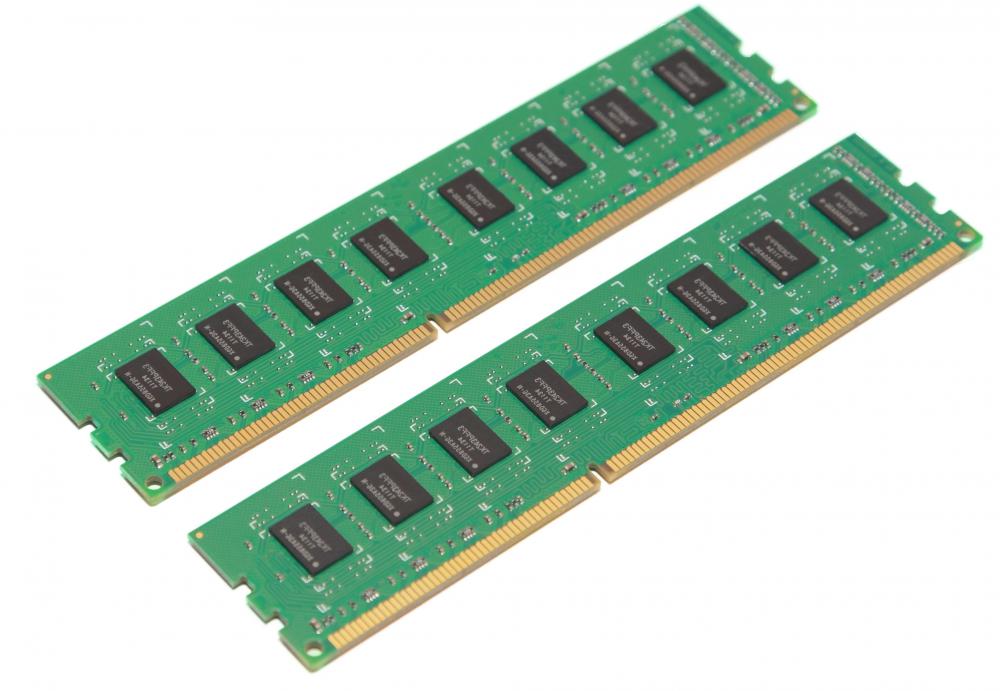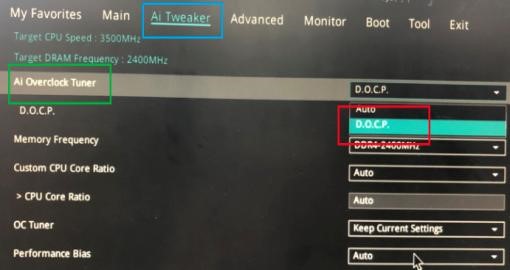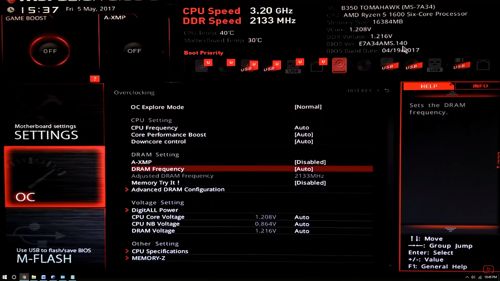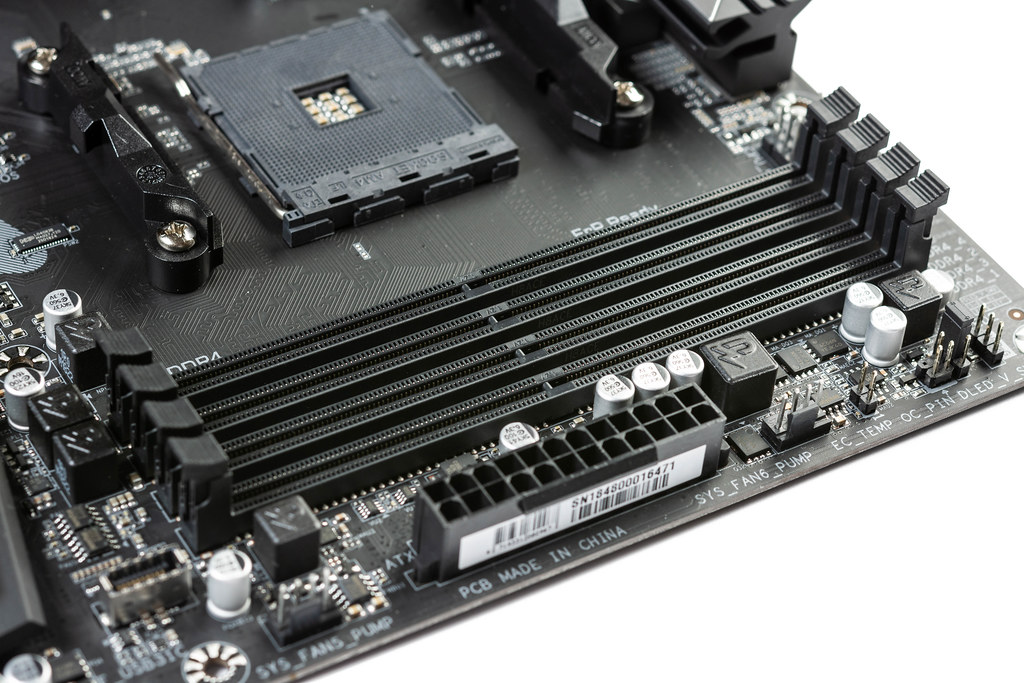
Computers have become an inseparable part of people’s lives today. The modern world will not be able to function properly if people stop using computers. These machines have made numerous tasks easy and quick. Continuous technological advancements take place to increase the capabilities of computers.
However, many problems arise in the functioning of computers from time to time. Problems occur in both hardware and software of the computers. At times, these problems are related to the limitations encountered in the designing or manufacturing process. Some problems or issues also take place due to the mistakes of the users.
The topic of this blog post – ‘How to Overclock RAM’, addresses an issue that is faced by the users of computers all over the world. This issue is about the low performance of RAM, i.e., Random Access Memory. RAM is a piece of hardware in a computing device. It acts as a short-term or temporary memory of a computer. Random Access Memory or RAM can store working data and machine code temporarily.
Thus, RAM is also called the ‘short-term memory’ of a computer. It can be read and changed in any order. RAM is also known as the internal memory of the CPU (Central Processing Unit) for storing data, programs, and results of the programs. The more RAM of a computer, the more data a computer can handle at any given moment. A computer and its applications use RAM to store and access temporary data. RAM works in conjunction with the hard drive, which is known as the ‘long-term memory’ of a computer.
Table of Contents
What is RAM Overclocking? Why Is It Required?
Before learning ‘how to overclock RAM?’, it’s important to understand what RAM overclocking means and why there is a need for it. As you must have understood by now, random access memory transfers the data to the central processing unit so that the latter can complete the action specified by the user of the computer.
The speed at which RAM sends data to the CPU is known as the ‘data transfer rate’, ‘frequency’, or ‘operating frequency’. A higher data transfer rate or frequency of RAM works in favor of the users. However, when it comes to RAM, frequency is not the only factor or aspect that affects its performance. Another factor is ‘timings’, which refers to the latency or the time taken by RAM between operations.
When the frequency of RAM is higher, the CPU gets the required data quickly. Therefore, the CPU works efficiently. On the other hand, timings or latency should be as low as possible. When RAM is produced, an ideal combination of frequency and timings is determined. One might think that RAM is made to have the highest possible frequency and the lowest possible timings.
But that’s not the case, as it’s practically difficult, so companies choose a combination that makes RAM deliver the best possible performance. When you buy a computer, its RAM is programmed to work at a certain capacity. However, it’s not the maximum capacity at which it can work.
You can increase the capacity by overclocking RAM. An overclocked RAM can enhance the performance of your computer. The overclocking process involves modifying parameters like voltages and timings so that the modules can operate at a higher speed.
How to Overclock RAM: Know the Essentials

You might have heard of overclocking a CPU (Central Processing Unit) or a GPU (Graphics Processing Unit) to increase the operating speed of a computer. But overclocking RAM can also help you achieve this objective. It’s worth mentioning here that overclocking RAM means changing the parameters set by the manufacturer of the computer.
Thus, when you overclock the random access memory of your computer, you may end up voiding the warranty on your computer. Overclocking may also lead to a decrease in the security, performance, and life of the central processing unit and other components.
Now, let’s understand how to overclock RAM with the help of the process mentioned here. RAM overclocking does not generate as much heat as generated during CPU overclocking or GPU overclocking. Before starting to overclock random access memory, you should acquire the necessary details about it. You can do so by using the tools mentioned here.
You can use CPU-Z to assess your DRAM. All you need to do is go to the memory tab of CPU-Z. This is a freely available tool. You can also check the DRAM information in the XMP settings used by the BIOS in your computer. BIOS (Basic Input/Output System) is a ROM (Read Only Memory) chip located on a motherboard. The next tool you should know about is Memtest86+, which is a tool used to perform stress testing on your computer.
How to Overclock RAM: Read the Methods Here
RAM can be overclocked by either of the two methods: 1) Using Manual Settings and 2) Using XMP. Before beginning to overclock RAM, you should check and note down the frequency and timings.
- Using Manual Settings
- Using XMP
This method involves overclocking the random access memory of a computer manually. First of all, reboot your computer into the BIOS. Now, go to the AI Tweaker settings of your BIOS. Select the manual settings. You can start increasing the DRAM voltage in 0.015V increments. Increase the CPU VCCIO and CPU System Agent voltages in 0.05V increments. Save the changes you have made and restart your computer.

XMP or eXtreme Memory Profile is an additional profile used by Intel to validate the settings for overclocking the random access memory. Intel allows users to overclock RAM straight out of the factory. But you can improve the modules further to get the desired level of frequency from your RAM and, thus, the desired level of performance from your computer.
Install the CPU-Z tool on your computer. Now open this tool and note down the DRAM frequency and timings as well as timing tables from the SPD tab. Restart your computer and enter BIOS mode. Now, go to the AI Tweaker option. Depending on your motherboard, this option might differ.
Now choose the right XMP profile that matches the specifications of the random access memory of your computer. Make the necessary changes in the BIOS and save those changes. Restart your computer.

Whether you use the manual settings method or XMP, you should perform stress tests on your computer once it restarts after the end of the process. Stress testing will help you check the stability of your computer. If you use the computer a lot, especially for the purpose of graphics or gaming, overclocking RAM might be extremely helpful for you.
Conclusion
You should acquire all the relevant knowledge about how to overclock RAM and the pros and cons of the overclocking process before beginning to overclock the random access memory of your computer.
RELATED ARTICLES
Latest Articles
 The Strategic Value of Purchasing FontsIn TipsApril 18, 2024In today’s visually driven world, fonts are more […]
The Strategic Value of Purchasing FontsIn TipsApril 18, 2024In today’s visually driven world, fonts are more […] Revolutionizing Business: How AI Transforms Customer Experience in the Inflatable IndustryIn BusinessApril 16, 2024Inflatable water slides are the epitome of summer fun, […]
Revolutionizing Business: How AI Transforms Customer Experience in the Inflatable IndustryIn BusinessApril 16, 2024Inflatable water slides are the epitome of summer fun, […] Most Asked Microservice Interview Questions For 2024In TechnologyApril 2, 2024To keep up with changing trends in the tech industry […]
Most Asked Microservice Interview Questions For 2024In TechnologyApril 2, 2024To keep up with changing trends in the tech industry […] Best JavaScript and CSS Library In 2024In TechnologyApril 2, 2024With the ever-expanding functionality of web […]
Best JavaScript and CSS Library In 2024In TechnologyApril 2, 2024With the ever-expanding functionality of web […] Front-End Development Trends to Follow in 2024In TechnologyApril 2, 2024For better engagement, the front-end development of […]
Front-End Development Trends to Follow in 2024In TechnologyApril 2, 2024For better engagement, the front-end development of […] Simplifying Mealtime: Meal Prepping for a Family of FourIn UncategorizedMarch 22, 2024In the hustle and bustle of daily life, planning and […]
Simplifying Mealtime: Meal Prepping for a Family of FourIn UncategorizedMarch 22, 2024In the hustle and bustle of daily life, planning and […] How to Freeze Dry Candy With And Without a Machine?In FoodFebruary 27, 2024A candy lover constantly searches for novel and […]
How to Freeze Dry Candy With And Without a Machine?In FoodFebruary 27, 2024A candy lover constantly searches for novel and […] How to Get Something Out Of Your Eye Immediately?In healthFebruary 27, 2024Getting something inside your eyes can be frustrating […]
How to Get Something Out Of Your Eye Immediately?In healthFebruary 27, 2024Getting something inside your eyes can be frustrating […] The Evolution of Remote Control Technology: From RC Cars to DronesIn TechnologyFebruary 22, 2024Remote control technology has come a long way since […]
The Evolution of Remote Control Technology: From RC Cars to DronesIn TechnologyFebruary 22, 2024Remote control technology has come a long way since […] Unveiling the most popular carnival costumes: A colorful parade of creativityIn FashionFebruary 19, 2024In the world of festivities and merrymaking, few […]
Unveiling the most popular carnival costumes: A colorful parade of creativityIn FashionFebruary 19, 2024In the world of festivities and merrymaking, few […] Custom GPTs: The Next AI Opportunity for BusinessesIn Business, TechnologyFebruary 14, 2024The rise of artificial intelligence has transformed […]
Custom GPTs: The Next AI Opportunity for BusinessesIn Business, TechnologyFebruary 14, 2024The rise of artificial intelligence has transformed […] How to Get Rid of a Canker Sore in 24 Hours?In healthFebruary 13, 2024Canker sores are also called aphthous ulcers. They […]
How to Get Rid of a Canker Sore in 24 Hours?In healthFebruary 13, 2024Canker sores are also called aphthous ulcers. They […]
stopie.com is a participant in the Amazon Services LLC Associates Program, an affiliate advertising program designed to provide a means for sites to earn advertising fees by advertising and linking to Amazon.com.
Clicking on an Amazon link from stopie.com does not increase the cost of any item you purchase.
We will only ever link to Amazon products that we think our visitors may be interested in and appreciate learning more about.




